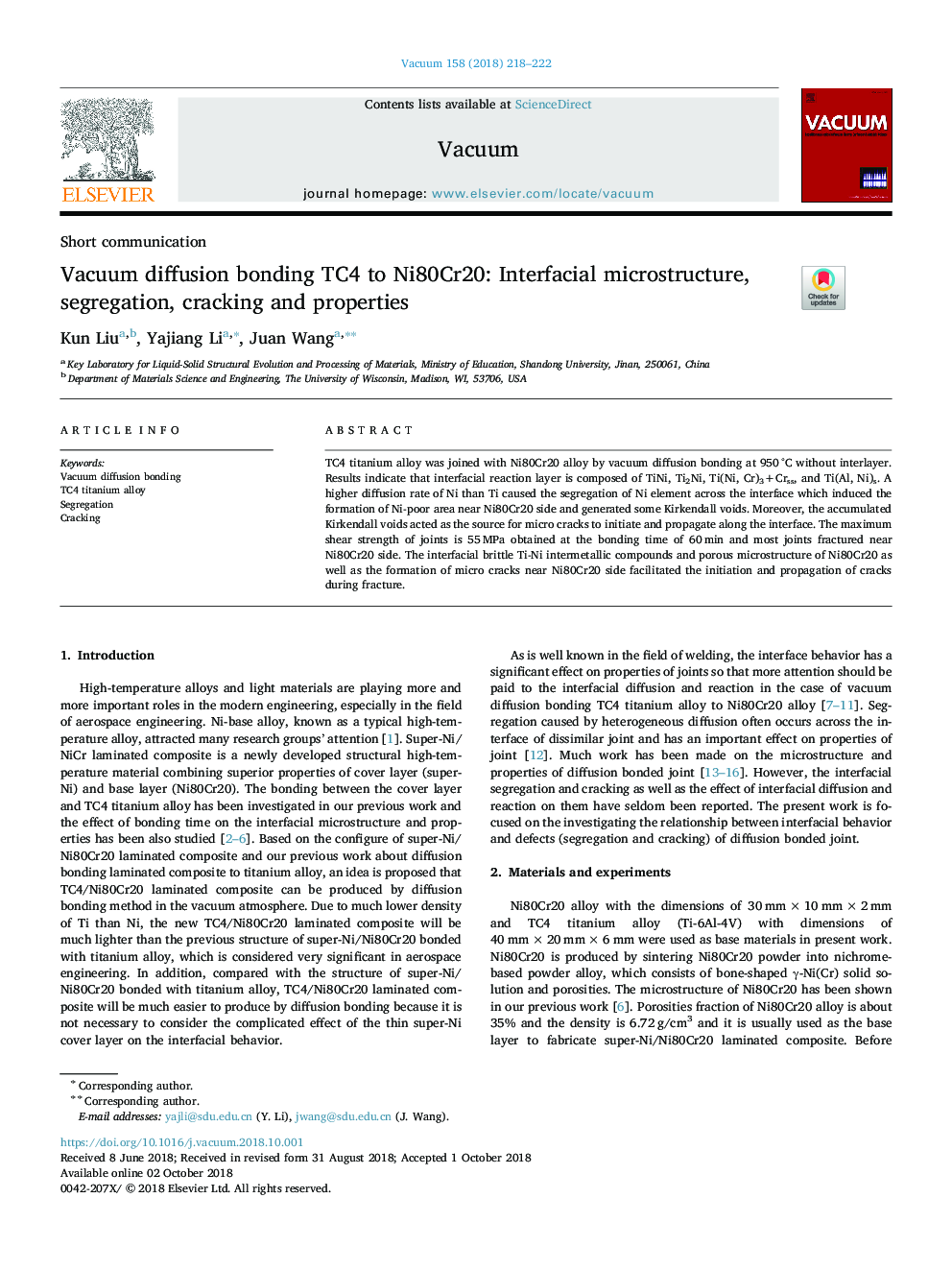| Article ID | Journal | Published Year | Pages | File Type |
|---|---|---|---|---|
| 11026543 | Vacuum | 2018 | 5 Pages |
Abstract
TC4 titanium alloy was joined with Ni80Cr20 alloy by vacuum diffusion bonding at 950â¯Â°C without interlayer. Results indicate that interfacial reaction layer is composed of TiNi, Ti2Ni, Ti(Ni, Cr)3+Crss, and Ti(Al, Ni)s. A higher diffusion rate of Ni than Ti caused the segregation of Ni element across the interface which induced the formation of Ni-poor area near Ni80Cr20 side and generated some Kirkendall voids. Moreover, the accumulated Kirkendall voids acted as the source for micro cracks to initiate and propagate along the interface. The maximum shear strength of joints is 55â¯MPa obtained at the bonding time of 60â¯min and most joints fractured near Ni80Cr20 side. The interfacial brittle Ti-Ni intermetallic compounds and porous microstructure of Ni80Cr20 as well as the formation of micro cracks near Ni80Cr20 side facilitated the initiation and propagation of cracks during fracture.
Related Topics
Physical Sciences and Engineering
Materials Science
Surfaces, Coatings and Films
Authors
Kun Liu, Yajiang Li, Juan Wang,
